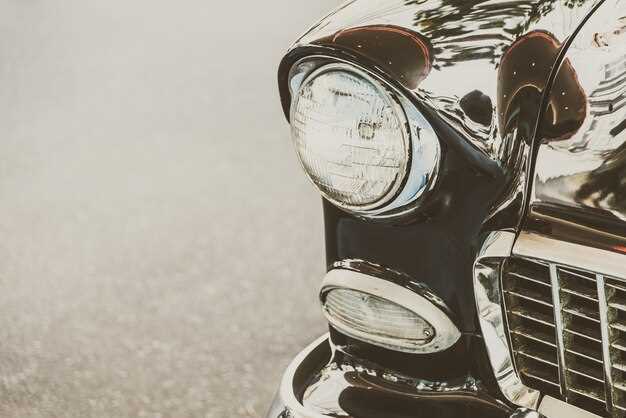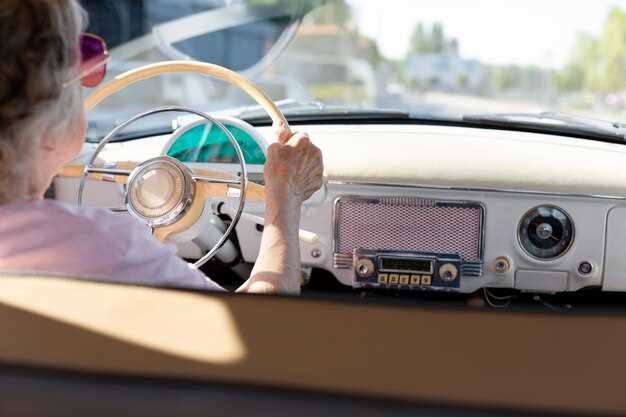
When it comes to daily commutes, the majority of drivers prioritize reliability and fuel efficiency. However, there’s a growing segment of auto enthusiasts who seek style and nostalgia in their daily rides. Classic cars offer not only a unique aesthetic but also the charm of automotive history. This article explores a selection of timeless vehicles that balance practicality and classic appeal, making them ideal for everyday use.
Many classic cars possess features that enhance their suitability for daily driving. Whether it’s a spacious interior for comfort, reasonably efficient engines, or straightforward maintenance, the right vintage model can make commuting an enjoyable experience. In this guide, we spotlight vehicles that not only excel on short trips but also evoke a sense of nostalgia and personality that contemporary cars often lack.
From American muscle cars to European roadsters, the classic car market provides a variety of options that meet diverse commuter needs. It’s essential to consider factors such as safety, comfort, and reliability when selecting a classic car for your daily commutes. Join us as we delve into the top classic cars that marry the vibrancy of yesteryear with the practicality essential for modern life.
Choosing the Right Classic Car for Urban Driving Conditions

When selecting a classic car for urban driving, it’s essential to consider various factors that will enhance your daily commuting experience. Unlike long highway drives, city environments demand vehicles that can maneuver easily, fit into tight parking spaces, and offer reliable performance in stop-and-go traffic.
One of the first considerations should be size and dimensions. Compact classic cars, such as the Mini Cooper or the Volkswagen Beetle, are ideal for navigating narrow streets and crowded urban areas. Their smaller footprint allows for easier parking and greater agility, making them perfect companions for city dwellers.
Fuel efficiency is another significant aspect. In urban driving conditions, frequent idling and short trips can lead to higher fuel consumption. Opting for classic cars with efficient engines or those modified for better mileage, like the Porsche 911 from certain eras, can help mitigate fuel costs and reduce the frequency of refueling.
It’s also crucial to consider reliability. Classic vehicles, while cherished for their vintage charm, can sometimes present mechanical challenges. Selecting a model known for its durability, such as the Ford Mustang or the Chevrolet Camaro, can significantly decrease the chances of frequent repairs and breakdowns, which could inconvenience you during your daily commute.
Comfort and interior space are highly relevant for urban driving. A vehicle with spacious interiors and comfortable seating will make the daily grind more enjoyable. Classic sedans, like the Buick Riviera, often provide the comfort and style you may desire while allowing you to navigate the urban landscape with ease.
Safety features play an important role in urban environments. While vintage vehicles might not have modern safety tech, many enthusiasts look for classics that have been retrofitted with contemporary safety upgrades such as seat belts, better brakes, and improved visibility options. Retro models like the Mercedes-Benz W123 often strike a balance between classic aesthetics and reasonable safety records.
Ultimately, the right classic car for urban driving conditions combines maneuverability, efficiency, reliability, comfort, and safety. By assessing these factors, you can select a vehicle that not only turns heads but also meets the practical demands of city life.
Maintaining Classic Cars: Tips for Daily Use and Longevity

Owning a classic car can be a rewarding experience, but ensuring its reliability for daily commutes requires special attention. Regular maintenance is crucial to keep these vehicles running smoothly. Start with a thorough inspection of essential components such as the engine, transmission, brakes, and suspension. Look for any signs of wear or leaks, and address problems before they escalate.
Change the oil and filters regularly, depending on your driving habits. Using high-quality oils and filters specifically designed for classic vehicles can significantly enhance engine performance and longevity. Additionally, check and maintain coolant levels to prevent overheating, especially if your classic car is used frequently in warmer climates.
Tires should not be overlooked; inspect them for proper inflation and tread wear. A good practice is to rotate tires regularly to ensure even wear. Consider investing in tires designed for classic cars, as these often have features that improve performance and handling.
Electrical systems in classic cars may require extra attention due to outdated components. Regularly check the battery condition, wiring, and all lights to prevent failures. It may be beneficial to upgrade to more modern wiring and lighting systems for enhanced safety and reliability.
Cleaning and protecting the exterior and interior of the car will help prevent rust and deterioration. Use products specifically designed for classic vehicles to maintain the paint and upholstery. Regular waxing can provide an additional layer of protection against elements.
When driving your classic car daily, warm it up properly before hitting the road. This allows the engine components to reach optimal operating temperatures, reducing wear. Avoid aggressive driving and sudden stops to keep mechanical stresses at bay.
Finally, keep comprehensive records of all maintenance and repairs. This not only helps track the vehicle’s condition but can also increase its value over time. Regularly attending car meets or joining clubs can provide additional insights into best practices for maintaining your classic vehicle.
Cost Analysis: Budgeting for a Classic Car as Your Daily Driver
Owning a classic car as a daily driver requires careful budgeting to ensure you can enjoy the experience without facing financial strain. Start by identifying the initial purchase price of the vehicle. Classic cars can range widely in cost, from a few thousand dollars to six figures, depending on make, model, and condition. Set a clear budget before shopping to avoid overspending.
Next, consider the costs associated with insurance. Classic car insurance may differ from standard auto insurance, often reflecting the car’s value and limited mileage. Obtain quotes from multiple providers to find the best coverage that offers protection without breaking the bank.
Maintenance costs are another crucial factor. Classic vehicles typically require more upkeep than modern cars due to their age and mechanics. Research common issues associated with your chosen make and model, and budget for regular maintenance, such as oil changes, brake replacements, and tire rotations. Factor in potential restoration costs, as older parts may need replacing or refurbishing.
Additionally, fuel efficiency is an important consideration. Many classic cars do not achieve the same fuel economy as modern vehicles, leading to higher fuel expenses. Research the expected miles per gallon (MPG) for the specific models you’re considering to incorporate fuel costs into your monthly budget.
Remember to include costs for storage and parking. If you live in an urban environment, finding a safe place to park a classic car can be challenging and costly. Assess whether you will need a garage or secure storage facility and what fees may apply.
Finally, factor in potential upgrades or modifications. While some classic car enthusiasts prefer to keep their vehicles in original condition, others may wish to enhance performance, convenience, or aesthetics. Plan for these costs to avoid unexpected expenses down the line.
In conclusion, budgeting for a classic car as your daily driver involves a comprehensive analysis of initial purchase price, insurance, maintenance, fuel, storage, and potential upgrades. By understanding these costs, you can enjoy your journey with a classic car without compromising your financial stability.
